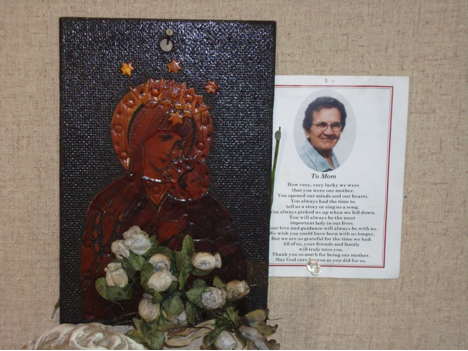By Rob Wipond, November 2012
Adapted from Focus Online
An elderly woman, with the support of her family, has been struggling to avoid forced psychiatric treatment at the hands of Vancouver Island Health Authority doctors.
When I arrived at the prearranged location, Michelle met me at the door. “Sorry, I didn’t want to tell you on the phone,” she said. “Now we’re going to go to where Mia really is.”
We drove through the winding suburban roadways, and it felt like I was being taken into remote mountains of Central America for a secret meeting with el Comandante of the guerrilleros. I was actually on my way to interview an 82-year-old Victoria woman named Mia, described by friends and family as quiet, sophisticated and loving. Mia hadn’t threatened anyone or broken any laws, but she was on the run—from her doctor and the Vancouver Island Health Authority. And this tense drama had come to epitomize the challenges, and frightening dangers, of enforcing powerful mental health laws that are guided by woefully weak science.
I HAD ACTUALLY MET Mia S. for the first time two months earlier (only the first names of family members are used to protect their privacy).
Mia lived in a Victoria retirement home from 2008 to 2011. She was put on various antidepressant drugs—common in Canada’s long-term care facilities, where 50 percent of our elderly are being given antidepressants (about 50 percent in BC are also being given antipsychotics, as was Mia, at times). During a prolonged period when several family members were unusually busy, Mia became lonely and withdrawn and, in mid-2011, was taken to the Royal Jubilee Hospital (RJH) geriatric psychiatry unit for several months. During this time, Mia’s close stepson, Michelle’s father, died unexpectedly. Responding to Mia’s expressions of loneliness and grief, Michelle took Mia into her home with her husband and children, where Mia lived until injuring her pelvis in March of 2012. While rehabilitating in hospital, Mia was transferred to the psychiatric unit again.
It was then, in June of 2012, that I started receiving concerned emails and calls from Michelle S. After a decade of writing publicly about mental health, civil rights, and seniors care, I’m often contacted for any advice I have by people negotiating “the system.”
VIHA senior geriatric psychiatrist Dr Michael Cooper had certified Mia under the Mental Health Act (MHA)—he was now holding her against her will in hospital, and intended to give her electro-convulsive therapy (ECT, or electroshock) against her and her family’s wishes. Mia feared ECT because she’d seen other patients experiencing massive memory loss. On her grandmother’s behalf, Michelle appealed the certification. Michelle asked me to witness the hearing. I agreed, provided Mia wanted me there, too.
Before meeting with Mia that first time, I reviewed some of her medical history. A key worry was malnutrition: “…lack of intake of food…major concern is that Mia is not eating…at significant risk for physical deconditioning…” It seemed Mia was suffering a depression so severe she was nearly starving, and therefore her doctors recommended emergency ECT.
I accompanied Michelle to the hospital, where Mia invited me to the next morning’s hearing. Mia also complained about being hungry. Michelle retrieved a half wheel of brie from a dining area, which Mia ravenously wolfed down. A nurse expressed frustration: “Oh no, eating isn’t her problem! We need her to have a bowel movement. Cheese won’t help that.”
So, what was the emergency?
Involuntary treatment and review panels
Over 10,000 people were certified, incarcerated and treated against their wills under BC’s Mental Health Act last year, including 1557 on the south island from all walks of life. Countless more patients are simply told, “Do this, or else you’ll be certified…”
And contrary to common belief, in BC, involuntary patients needn’t be “dangerous”—they need only be diagnosed with a mental disorder and be at risk for “deterioration.”
It’s not without controversy. After years of consultations developing the UN Convention on the Rights of Persons with Disabilities, the UN High Commissioner for Human Rights recently proclaimed that forced psychiatric treatment “must be abolished.” A BC Civil Liberties Association paper complains about how, unlike elsewhere in Canada, BC gives no rights even to intellectually competent individuals to refuse psychiatric treatments.
Appeals are heard by a three-person administrative tribunal of the provincial Mental Health Review Board (MHRB) comprised of a medical practitioner, a lawyer, and a community member. However, Vancouver’s Mental Health Law Program (MHLP) provides the only specialized, publicly-subsidized legal representatives for patients, and they turned down over half of requests for assistance last year due to funding shortages. In last year’s Public Commission on Legal Aid final report, Commissioner Leonard Doust wrote that he was “profoundly shocked” by this “profound violation” of human rights, where so many vulnerable people, often while forcibly drugged, had to represent themselves at detention hearings.
Meanwhile, according to the Health Ministry’s MHRB website, it’s usually a two-hour hearing, with a majority decision within 30 minutes. Only 15-20 percent of patient appeals are successful.
He didn’t legally have to wait, but Dr. Cooper had agreed to postpone the ECT until Mia’s appeal. Yet Mia couldn’t get MHLP assistance. Her chances didn’t look good.
No right to attend
In a Royal Jubilee Hospital meeting room, the chair, lawyer Frank Borowicz, briskly introduced the panel. Nothing was said or done to comfort Mia. There was no welcoming, inviting speech about how we were all gathered to help understand what was truly best for this vulnerable person going through a very difficult time. Borowicz pronounced discussions would be “informal” and explained nothing about the purpose, agenda or procedures for the hearing—instead, he grilled Mia:
“[Mrs. S.], do you know why we are here?” Borowicz asked.
“Yeah,” Mia replied.
“Why are we here, ma’am?”
“It’s all about me.”
“What about you, ma’am?”
The back and forth became excruciating, as if Borowicz’s interrogation were an on-the-spot test of Mia’s mental capacity, and Mia’s every hesitation, misunderstanding, confusion or moment of forgetfulness was indicting her. Borowicz would soon admit as much, stopping Michelle from assisting Mia with a recollection and saying, “Is it possible for [Mia] to speak? Because if it isn’t, then that tells me something about whether or not she’s capable of forming a view that she wanted a lawyer.”
Perhaps Borowicz was out of sorts: Mia’s recently hired lawyer hadn’t come but had requested an adjournment. Michelle had brought what might’ve looked to Borowicz like a small army, including her husband Russel, Mia’s current home caregiver, a family friend, me, a seniors advocate, and two lawyers. Dr Michael Cooper had objected to my presence, and had sent for VIHA’s legal counsel, Lee Ann DeCecco.
Borowicz soon adjourned to wait for DeCecco. Cooper and DeCecco then met with the panel separately for 15 minutes. Reconvening, Borowicz promptly ordered me, the seniors advocate, and the family friend to leave because, he said, this was a “private” hearing.
I realized it was probable no journalist had ever witnessed a BC mental health review panel hearing. The public had no idea how people’s fates were being decided by people like Borowicz. I resolved to write about it.
Based on recordings I obtained from anonymous sources, things didn’t lighten up after I’d left. Borowicz began asking Michelle about when, how and why she’d retained her own lawyers. When one lawyer questioned the relevance, Borowicz threatened to throw him and Michelle out, too. “Well, sir, [Michelle] is not a party to these proceedings,” Borowicz proclaimed, “and if you’re here on her behalf, you may be excluded, too.”
The case for electroshocking Mia
Cooper began with a powerful 40-minute narrative. Pulling observations from medical records, he described Mia as having a 5-year struggle with depression.
“Patient has severe depression characterized by severe apathy and withdrawal…spends most of her day lying in bed…not interacting socially…not participating in activities…not eating well…persistent low weight…decreased self care…family history of suicide…danger to herself…”
Mia had declined participation in many activities due to feeling nauseous. “Her complaint of nausea, associated with really objective signs of distress, has been a persistent issue with Mia,” said Cooper, adding that all possible causes of the nausea had been dispelled. “We feel that [the nausea] is a psychosomatic presentation of the depression.”
Cooper also portrayed Michelle as a questionable caregiver. He explained that she “was not following up with the recommendations by the treatment team.” Michelle had once “reported being overwhelmed.” Michelle’s hired home help was “inadequate for Mia’s needs”. Mia’s pelvic injury was made to sound like it may have been a result of neglect.
Cooper even criticized Michelle for being “too coercive,” and for sometimes using words to others like “make” or “force” Mia to do things which might help her grandmother feel better. Cooper then segued, with no sense of irony, into proposing forced electroshock, partly due to Mia not meeting his expectations for attending VIHA support groups and outreach clinics sufficiently often. He also claimed he’d once allayed Mia’s fears about ECT, but Michelle had “undermined” that.
ECT and memory loss
Mia had good reasons to be afraid.
Most people imagine that electrically shocking people’s brains was long ago relegated to the dustbins of psychiatric history along with other abusive techniques from the same era, like insulin comas and icepick lobotomies. In fact, BC’s current best-practice medical guidelines say ECT can treat depression, mania, schizophrenia and mood disorders, while it “may be the first choice of therapy for frailer, older patients” who don’t tolerate drug side effects well. Last year, over 100 Victorians received a typical “treatment” of 10-12 rounds of ECT over three weeks. (Some receive ECT more regularly.)
ECT often “works”: many patients experience a mood lift lasting weeks to several months. “How does it work?” one heading asks, in a section of BC’s medical guidelines directed at patients. The answer: “Current theories suggest that the seizure activity causes changes in brain chemistry.” That theory is actually from the 1940s, and the guidelines themselves correctly dismiss it in the section directed at doctors. A shock that induces a grand mal seizure, the guidelines state, “will have little effect on improving target symptoms (i.e. depression).” To achieve “therapeutic” effects, shocks must be 2.5 to 6 times the intensity required to cause a major convulsion lasting 25 seconds or more.
Consequently, critics argue ECT actually “works” through damaging shocks that blot out memory and cognition until you forget your problems and become docile.
VIHA’s brochure for patients assures memory losses are only “temporary.” A headline in our provincial medical guidelines similarly declares, “Myth: ECT leaves permanent memory loss.” However, read further, and these same guidelines admit, “memory loss for events that occur before, during, and/or after the period of time you are being treated may persist.”
Such spin-doctoring has characterized ECT debates for decades. In 2001, two UK Department of Health-commissioned reviews found most pro-ECT studies had “limited general credibility” and avoided examining long-term impacts, while surveys found 29 to 79 percent of ECT patients reported permanent memory loss. So in 2007, long-time ECT proponent Harold Sackheim buckled to public pressure and performed “the first large-scale, prospective long-term study of cognitive outcomes following ECT.” Sackheim’s team reported in Neuropsychopharmacology that ECT caused long-term disruptions in most people’s abilities to recall events, retain new information and think clearly. And the worst effected were elderly women whom, in Victoria as elsewhere, are two to five times more likely than men to be treated with ECT.
Recently, the US Food and Drug Administration demanded manufacturers finally begin formally testing ECT devices for effectiveness and safety.
Yet Mia’s hearing was already underway.
Whose story is more believable
After Cooper’s testimony, Michelle said she was “appalled” by the inaccuracies she’d heard. (Mia was largely silent or resting in hospital throughout the five-hour hearing, and she was rarely asked anything. She told me later she was “just frightened” the entire time.) Michelle and Russel’s initial responses were emotional and disjointed. In part, they were staggered by how Cooper had been able to access and selectively cull information from virtually every point of contact they’d ever had with the health care system, from relationships they’d assumed were confidential with social workers, support groups, pharmacists, family physicians, and private home care companies. Alone against all this, they felt they had no chance.
But they had lawyers. Combing through those same records, Michelle’s lawyers found evidence of Mia’s status changing almost weekly, including “mild” depression, “probably not clinically depressed,” “smiling,” “tends to minimize and deny her symptoms,” “able to… present well.” Even just two weeks before certifying Mia, Cooper wrote, “no obvious signs of depression…no grounds to proceed involuntarily.” And if Mia has had depression for years, they asked, is that indication of an emergency, or indication that she has been successfully living with it?
They found ups and downs in the weight records. They argued that Mia, known as an extremely picky eater who hated the food in the care facility and hospital, gained weight at Michelle’s.
As for Mia’s time in bed—how much was there to do in the small, depressing hospital unit, anyway? And weren’t patients frequently criticized for walking around too much?
And Cooper’s hint of some dangerous genetic predisposition, a history of family suicides which Mia and Michelle said was nonsense, turned out to come from a social worker’s note after chatting with someone unnamed.
Meanwhile, they explained, Mia didn’t attend VIHA’s support group because she felt out of place amongst people who seemed much more troubled.
And if Mia’s accident somehow reflected poorly on Michelle’s home care, how did it reflect on the hospital’s care that Michelle brought Mia back repeatedly before doctors finally diagnosed her with a pelvic fracture instead of with just deeper depression?
The lawyers also suggested Mia’s nearly-constant nausea could have been worsening her depression, and could have been caused by medications. Cooper admitted another doctor had suggested that, so he’d changed one antidepressant, and later tried stopping two. (Mia had actually been taking eight major drugs, often five or more simultaneously, and the side effect profile for every one included possible nausea.)
Michelle presented her home care plan and, over the next several hours, the panel zigzagged through questions for Cooper, Michelle and Russel. In particular, they asked Michelle and Russel reams of questions about the condition of their home, Mia’s suite, their neighbourhood, their work and financial circumstances, their educational background, their willingness to ensure Mia followed VIHA doctors’ orders, and their level of respect for psychiatric science. It seemed it was Michelle (a research assistant on leave from the University of Victoria) and Russel (owner-manager of a shopping centre) who were really on trial, being judged against unspoken standards.
Court without rules
Russel described the hearing process as, “like a wood chipper, like a steam roller, like you were going to get destroyed.”
Paige Kato, Mia’s university-student caregiver, described it as “disorganized” and “unprofessional.”
“To even have to go through a process like that for such a thing is really outrageous,” she said.
Both lawyers present at the hearing declined comment.
Mia’s lawyer, Lloyd Duhaime, generally observed, “One of the problems with administrative tribunals is that they are very much masters of their own process. It’s like Judge Begbie on horseback in the Kootenays back in the 1880s. Each tribunal, while quite arguably trying to do the best they can, imposes these apparently arbitrary decisions.”
Administrative tribunals were designed to allow conflicts to be resolved outside slow, expensive courts, explained Duhaime, but BC’s expanding use of them, especially in situations where someone’s “soul” is at stake in the face of “horrifying” psychiatric treatment, is worrying. “These types of decisions should be made by courts of law.”
Duhaime was particularly disturbed to learn that Dr Cooper had been privately talking ahead of the hearing with MHRB chair Margaret Ostrowski. Ostrowski is essentially a one-woman supreme court for the panels, ruling on laws, processes and conflicts.
“It certainly is confusing for a lawyer who goes by the rule book to have a communication with the chair of the Mental Health Review Board, who casually remarks that she’s already spoken to the lead psychiatrist on the case directly on previous occasions,” said Duhaime. He added, “I would add a bunch of question marks after that, as if to say, it sounds almost hard to believe, doesn’t it????”
I requested an interview with Ostrowski, but she declined and refused to provide anyone else. A Health Ministry communications rep said someone had gotten to her first: “She was not impressed apparently with what happened at a hearing that you attended…[She thinks] the way that you acted was not professional.”
In my opinion, I’d behaved professionally in my brief time at the hearing, but I stopped pursuing Ostrowski because the situation seemed to pointedly exemplify the concerns Duhaime and others were raising. Indeed, the MHRB’s own “Rules of Practice and Procedure” articulately elucidated the problems: These “rules” are basically a list of things the panel can do any way it wants, each one presenting more opportunities for arbitrariness, behind-the-scenes scheming, and lack of public accountability. For instance:
Rule 15.1: The Board “requires the patient to attend the hearing.” Or, alternatively, the Board can refuse to allow the patient to attend his own hearing.
Rule 15.5: “Witnesses…must not be present in the hearing room before they give their evidence,” except if the Board decides otherwise.
Rule 16.1: The hearing “must be held in private unless the review panel otherwise orders.”
Rule 17.1: The review panel can decide to allow or disallow any evidence, “whether or not the information would be admissible in a court of law.”
Rule 17.4: Panel members will not review or discuss evidence with any party to the case before or outside the hearing, except “in the discretion” of the panel.
In 1992, BC’s provincial Ombudsman recommended legislation changes to address “possible unfairness” due to the “wide discrepancy in procedures” and “informal standards” mental health review panels were operating under. Her recommendations haven’t been implemented.
In Mia’s case, the panel declared in their final written decision, “The patient is a member of a close and loving family, which has always caringly attended to her personal, as well as medical care and supervision.” The panel further concluded that Mia did not need to be electroshocked. She did not need to be certified. She did not even need to be in hospital. Mia was sent home the morning after the hearing.
I was immensely relieved for Mia. But it was also unnerving. After all, this complete reversal just further highlighted the unscientific, unfair process that had deprived Mia of her liberty for months, and had nearly subjected her to electroshock. So who else was in danger?
Dr Alistair Murray, the panel psychiatrist, wrote a dissenting opinion. He said Michelle and Russel were “obviously caring people,” but they didn’t have “appropriate expertise.” He concluded: “[Mia S.] is committable under the Mental Health Act.”
It was a foreboding warning.
You’re free to go. Sort of.
Shortly after Mia’s discharge from hospital, VIHA representatives began to call (according to Michelle, sometimes many times per day, but she did not answer) and they also came by her home at least twice in two weeks that she knew of.
“They asked us a ton of questions, trying to find out what we were doing, where we were going,” said Michelle. “They asked grandma who her new doctor was…How’s your therapy going…”
Since the hearing, the whole family began viewing all health system workers with inherent suspicion: Whose side were they on? What would they report? Duhaime wrote to VIHA lawyer DeCecco, protesting the continuing “invasion of my client’s privacy.”
Far from denying the harassing activities, DeCecco responded with demands: Mia must visit a physician monthly, continue taking all prescribed drugs, submit regularly to assessments by VIHA staff, and always give VIHA her current whereabouts and phone number. And Michelle must help Mia do all this. “VIHA requires compliance with the above on or before September 26, 2012,” wrote DeCecco.
DeCecco did not say what the consequences of non-compliance might be, but from research, Michelle and Russel learned the Adult Guardianship Act gives health authorities powers to enter a home without a warrant, “use any reasonable force” and “take any other emergency measure” to seize any adult whom they believe may be “apparently incapable” or neglected.
DeCecco also suggested to Duhaime that the Public Guardian might be called in to take over Mia’s affairs. And indeed, both Russel and Michelle had earlier received cryptic letters from the Public Guardian’s office, stating, “We are in receipt of a referral with respect to [Mia S.] and will be assessing the situation to determine if the services of our office are required.”
Outraged, Duhaime pointed out that the panel’s discharge of Mia was “unconditional.” “There’s no difference really between the regular citizen and my client,” he said. “[Mia] is a person who is entitled to the full protection of the law in terms of her privacy and the sanctity of her being, and as far as I’m concerned, I will protect that with my last breath.”
The family went underground. Calls were screened, daily details were closely guarded, and Mia began moving between friends’ and relatives’ homes in Victoria and elsewhere. Michelle and Russel adapted their work situations and started home schooling their children to allow family mobility.
When I sat with Mia in her relative’s home, she seemed quiet and sensitive, but clearly wanted freedom from VIHA’s clutches.
She described mainly feeling “frightened” and like she was “going nuts” in the hospital. She was now taking no drugs of any kind, and felt better. “I had the feeling I was overdrugged,” Mia said. “Terrible. I felt very tired.”
She was no longer experiencing nausea, but she said she still feels depressed sometimes. I asked what makes her feel better. “I like to be with this family,” she answered. “I’m very glad I have Michelle and Russel.”
Was she surprised to learn about doctors’ powers to take away her rights? “Yeah, I was really surprised about that,” she said. “I thought the doctors were there to help the patients.”
The relative hosting Mia said Mia was “fantastic” now and opined that Mia’s “soft” nature made her easily “strong-armed” by male doctors. “She needs to be left alone now. She needs to have an environment where she feels safe and secure.”
Her own perspective on what she’s been witnessing? “I am completely shocked by it. I have aged parents myself…I just had no idea you could actually lose control of someone that you love.”
What protection is there?
“What do they want, why do they want to do these things to us, what are their motivations?” asked Russel. “Is it money? Is it something darker?”
Surely, this conflict and breakdown of trust on all sides weren’t good for Mia. But as her hearing had demonstrated, there are still no objective ways to identify hypothetical brain diseases or biochemical imbalances, so declaring anyone certifiably mentally ill against his, or his family’s, wishes almost inevitably develops into each side criticizing the other’s credibility, character and comprehension of reality.
For confidentiality reasons, VIHA psychiatrist Dr John Copen couldn’t speak about particular cases, but he conceded that during certifications, “There are always difficulties around families, and patients, and have the right things been done.”
Copen said differences of opinion can be addressed by “checks and balances,” such as review panels. However, he acknowledged that, if doctors don’t agree with a panel decision, they don’t really have to abide by it, anyway. “If a review panel overturns a status, virtually immediately, if that condition still exists, a practitioner can make another application for certification,” said Copen. If a physician believes a person is “really ill” or “very at risk,” he added, then “the physician would be in fact held medically negligent if they did not do their clinical duty to manage that safety risk.”
According to the BC Civil Liberties Association, broad Mental Health Act liability protections would likely prevent doctors from being sued even for “disastrous” actions. Nevertheless, Copen’s perspective reflects an important feeling that’s likely genuine and pervasive. With the enormous powers they’ve been handed, many psychiatrists probably experience a swelled sense of responsibility, like an army general, or someone who gets an infant left on her doorstep.
And like generals, psychiatrists are reluctant to relinquish or distribute those powers. For example, last year’s legislation empowering advance directives for health care decisions excluded mental health care. We’ve gained stronger rights to decline resuscitation, but never to refuse psychiatric drugs or electroshock.
“From our end, we really are doing our best to help our patients and our best to promote good practice and good care,” Copen said, describing “a really intense caring attitude” amongst most mental health workers.
Of course, a psychiatrist’s “intense caring” about you could seem warmly helpful, or imposingly threatening.
“[Mental health professionals] do grapple with and struggle with what’s best for the patient, what’s best for the family, first and foremost,” said Copen. “Not everything is clear as mud…There are no easy answers.”
Michelle and Russel were at a loss as to what advice to give others, because they’d had everything in order with Mia, including powers of attorney, representation agreements, home support and more.
“I felt that this was a great country, and we had a good Charter of Rights, and that we were protected here, and we were free people,” said Russel. “But we’re not. We’re all in danger. No matter what legal documents you have that you think are expressing your desires and wishes…None of that is worth anything once the hospitals and doctors decide that they want you.”
“This has ruined our lives,” said Michelle. “It’s been a year of hell for us…Financially, it’s insane. Just our time, our family, everything. It’s been overwhelming.”
“I’m scared,” said Russel. “The legislation absolutely does need to change. And people need to know what’s going on because they’re hiding it. And these stories are so impossible to believe. The only way that this can change is in the public eye.”
For others in their situation, Mia suggested, “Perhaps they should speak out.”
Rob Wipond has been shortlisted this year for a National Magazine Award, two Western Magazine Awards, and three Jack Webster journalism awards for his writing in Focus.
Adapted from Focus Online







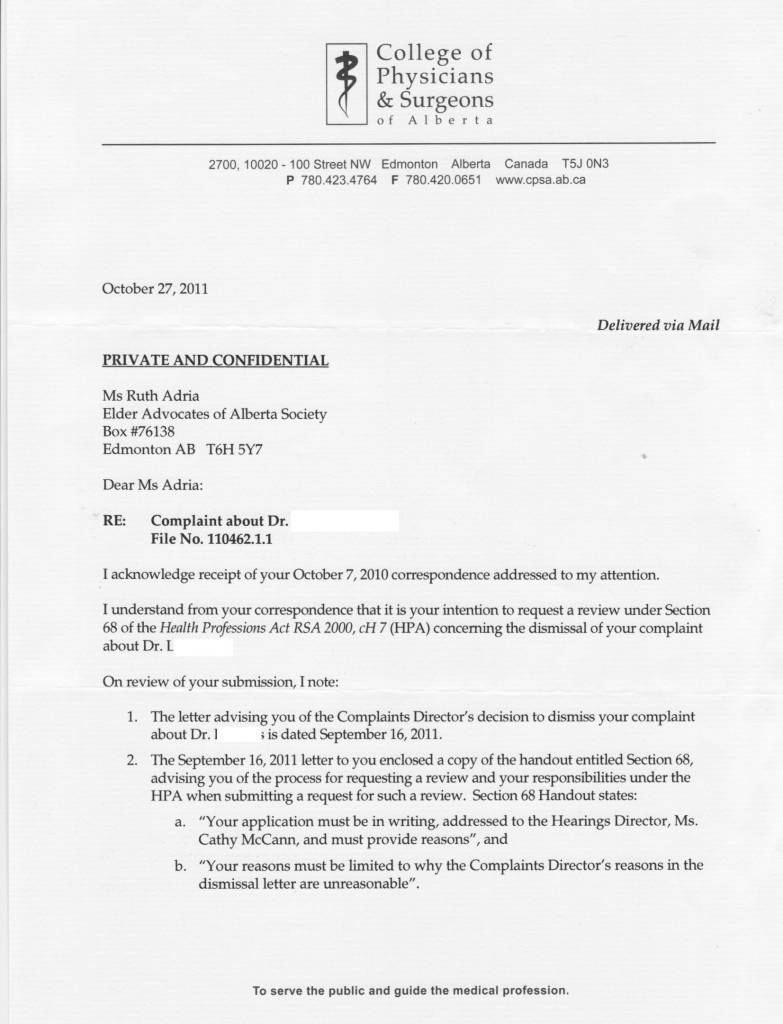
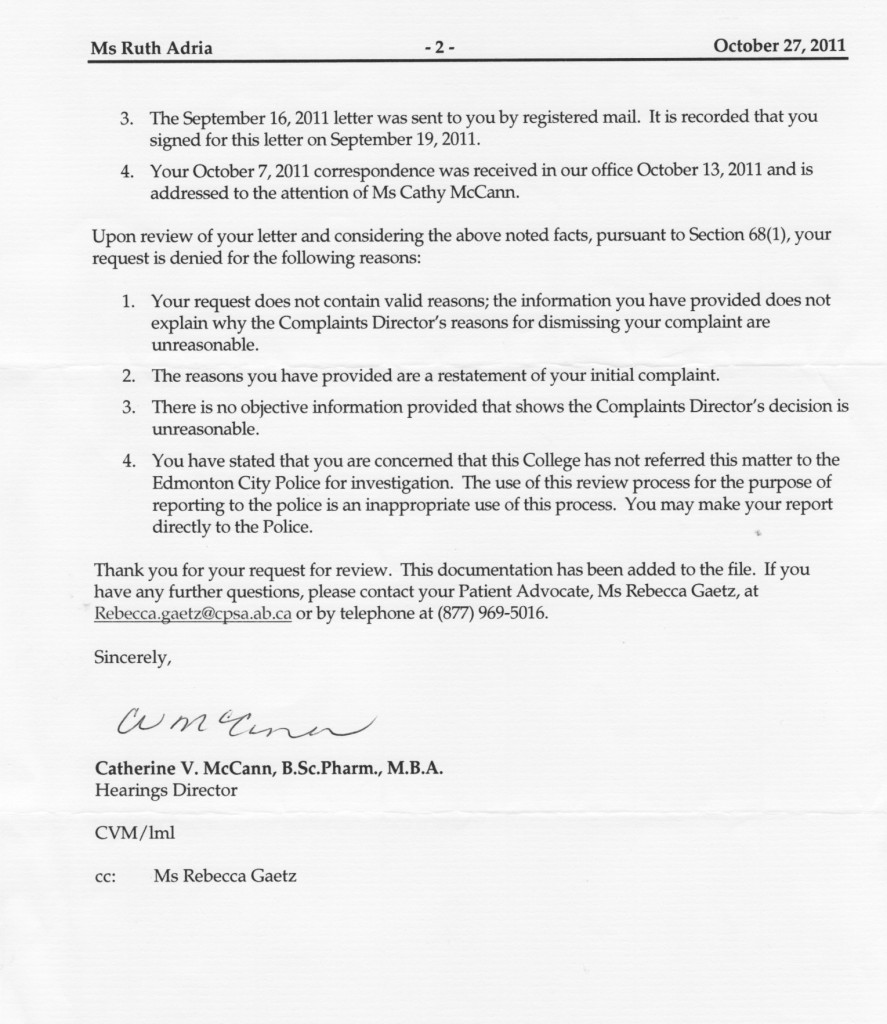
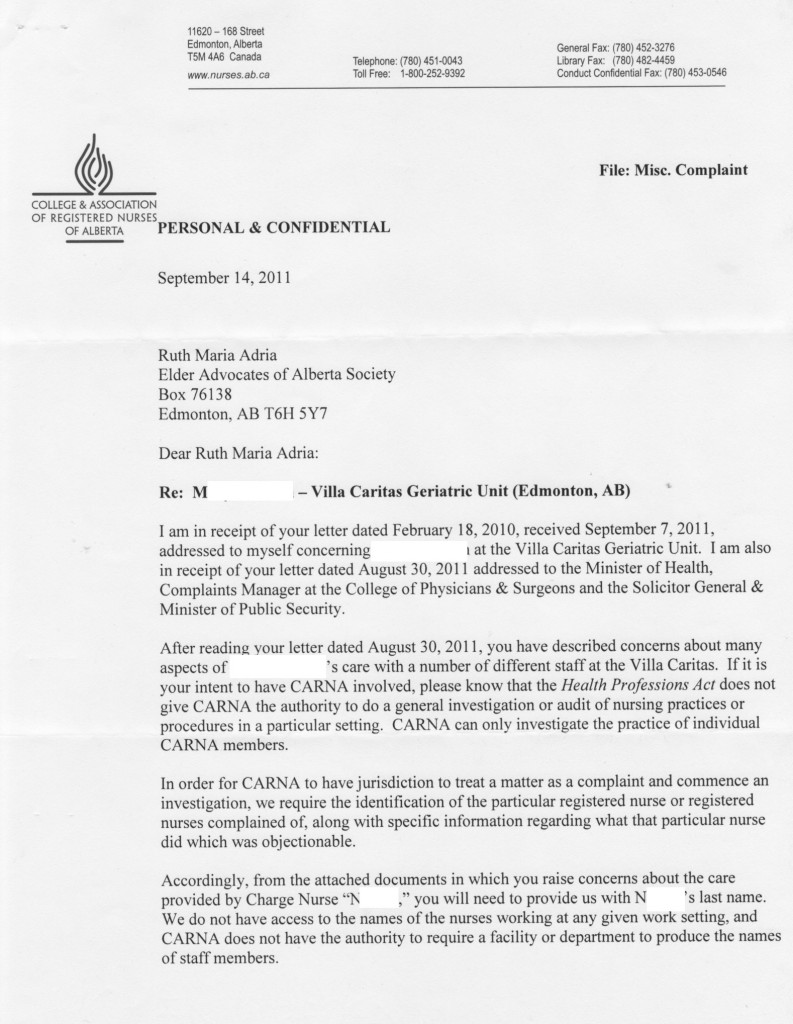
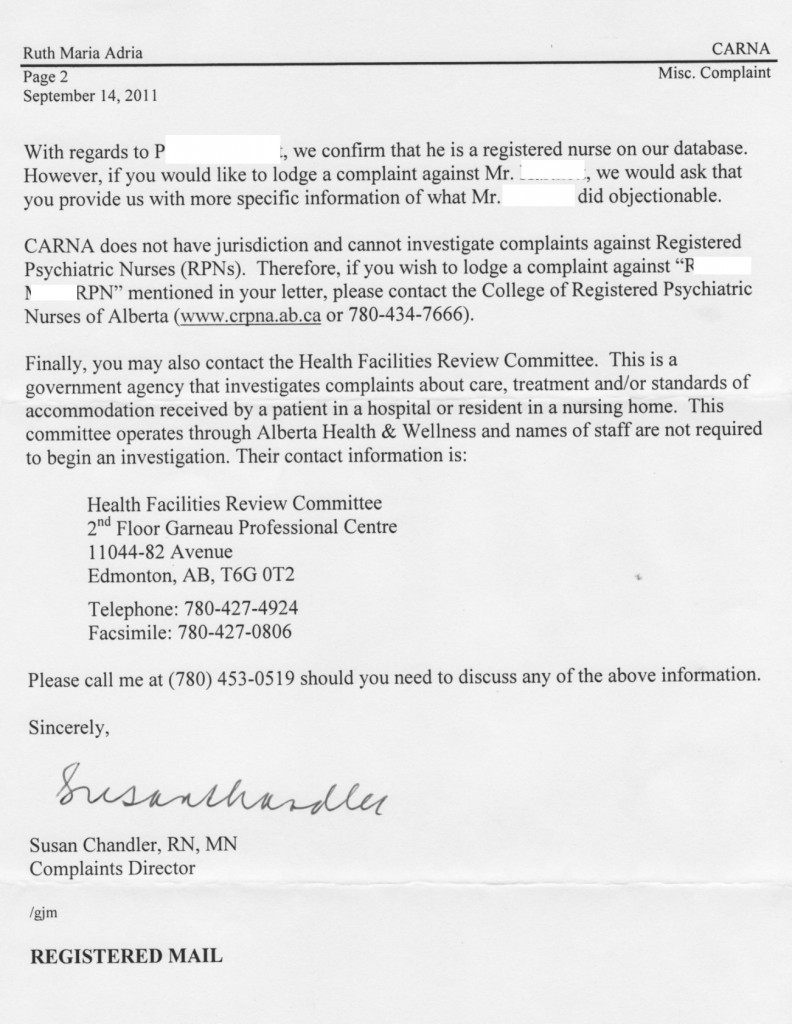

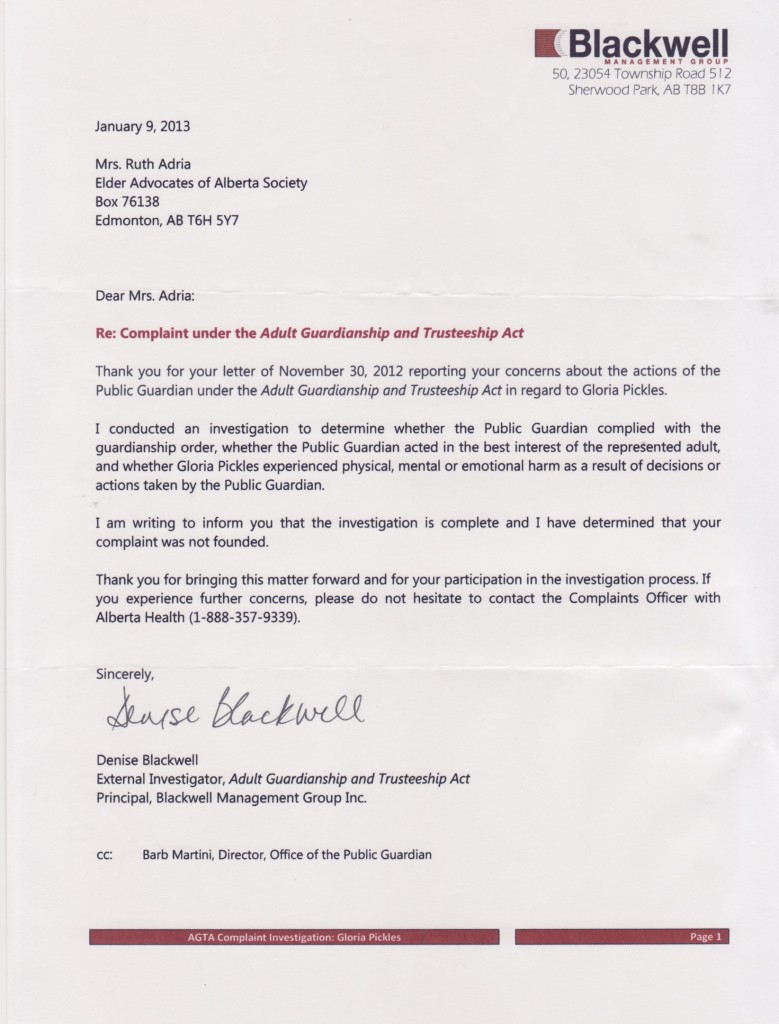





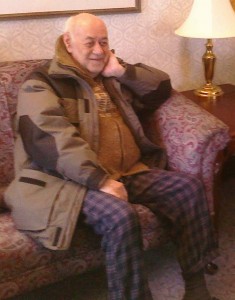 A Winnipeg senior who died on his front walk after being discharged from the Grace Hospital, Winnipeg emergency room in minus 40 weather, wearing slippers, pyjama bottoms and a coat.
A Winnipeg senior who died on his front walk after being discharged from the Grace Hospital, Winnipeg emergency room in minus 40 weather, wearing slippers, pyjama bottoms and a coat.